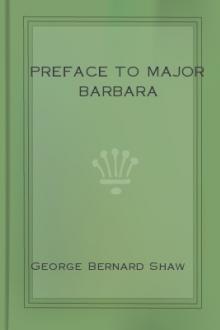Falling in Love, Grant Allen [best ebook reader under 100 TXT] 📗

- Author: Grant Allen
- Performer: -
Book online «Falling in Love, Grant Allen [best ebook reader under 100 TXT] 📗». Author Grant Allen
Even as things stand at the present day, however, it is wonderful how much use we modern Englishmen now make in our own houses of this far Eastern nut, whose very name still bears upon its face the impress of its originally savage origin. From morning to night we never leave off being indebted to it. We wash with it as old brown Windsor or glycerine soap the moment we leave our beds. We walk across our passages on the mats made from its fibre. We sweep our rooms with its brushes, and wipe our feet on it as we enter our doors. As rope, it ties up our trunks and packages; in the hands of the housemaid it scrubs our floors; or else, woven into coarse cloth, it acts as a covering for bales and furniture sent by rail or steamboat. The confectioner undermines our digestion in early life with coco-nut candy; the cook tempts us later on with coco-nut cake; and Messrs. Huntley and Palmer cordially invite us to complete the ruin with coco-nut biscuits. We anoint our chapped hands with one of its preparations after washing; and grease the wheels of our carriages with another to make them run smoothly. Finally, we use the oil to burn in our reading lamps, and light ourselves at last to bed with stearine candles. Altogether, an amateur census of a single small English cottage results in the startling discovery that it contains twenty-seven distinct articles which owe their origin in one way or another to the coco-nut palm. And yet we affect in our black ingratitude to despise the question of the milk in the coconut.
FOOD AND FEEDINGWhen a man and a bear meet together casually in an American forest, it makes a great deal of difference, to the two parties concerned at least, whether the bear eats the man or the man eats the bear. We haven't the slightest difficulty in deciding afterwards which of the two, in each particular case, has been the eater, and which the eaten. Here, we say, is the grizzly that eat the man; or, here is the man that smoked and dined off the hams of the grizzly. Basing our opinion upon such familiar and well-known instances, we are apt to take it for granted far too readily that between eating and being eaten, between the active and the passive voice of the verb edo, there exists necessarily a profound and impassable native antithesis. To swallow an oyster is, in our own personal histories, so very different a thing from being swallowed by a shark that we can hardly realise at first the underlying fundamental identity of eating with mere coalescence. And yet, at the very outset of the art of feeding, when the nascent animal first began to indulge in this very essential animal practice, one may fairly say that no practical difference as yet existed between the creature that ate and the creature that was eaten. After the man and the bear had finished their little meal, if one may be frankly metaphorical, it was impossible to decide whether the remaining being was the man or the bear, or which of the two had swallowed the other. The dinner having been purely mutual, the resulting animal represented both the litigants equally; just as, in cannibal New Zealand, the chief who ate up his brother chief was held naturally to inherit the goods and chattels of the vanquished and absorbed rival, whom he had thus literally and physically incorporated.
A jelly-speck, floating about at his ease in a drop of stagnant water under the field of a microscope, collides accidentally with another jelly-speck who happens to be travelling in the opposite direction across the same miniature ocean. What thereupon occurs? One jelly-speck rolls itself gradually into the other, so that, instead of two, there is now one; and the united body proceeds to float away quite unconcernedly, without waiting to trouble itself for a second with the profound metaphysical question, which half of it is the original personality, and which half the devoured and digested. In these minute and very simple animals there is absolutely no division of labour between part and part; every bit of the jelly-like mass is alike head and foot and mouth and stomach. The jelly-speck has no permanent limbs, but it keeps putting forth vague arms and legs every now and then from one side or the other; and with these temporary and ever-dissolving members it crawls along merrily through its tiny drop of stagnant water. If two of the legs or arms happen to knock up casually against one another, they coalesce at once, just like two drops of water on a window-pane, or two strings of treacle slowly spreading along the surface of a plate. When the jelly-speck meets any edible thing—a bit of dead plant, a wee creature like itself, a microscopic egg—it proceeds to fold its own substance slimily around it, making, as it were, a temporary mouth for the purpose of swallowing it, and a temporary stomach for the purpose of quietly digesting and assimilating it afterwards. Thus what at one moment is a foot may at the next moment become a mouth, and at the moment after that again a rudimentary stomach. The animal has no skin and no body, no outside and no inside, no distinction of parts or members, no individuality, no identity. Roll it up into one with another of its kind, and it couldn't tell you itself a minute afterwards which of the two it had really been a minute before. The question of personal identity is here considerably mixed.
But as soon as we get to rather larger creatures of the same type, the antithesis between the eater and the eaten begins to assume a more definite character. The big jelly-bag approaches a good many smaller jelly-bags, microscopic plants, and other appropriate food-stuffs, and, surrounding them rapidly with its crawling arms, envelopes them in its own substance, which closes behind them and gradually digests them. Everybody knows, by name at least, that revolutionary and evolutionary hero, the amœba—the terror of theologians, the pet of professors, and the insufferable bore of the general reader. Well, this parlous and subversive little animal consists of a comparatively large mass of soft jelly, pushing forth slender lobes, like threads or fingers, from its own substance, and gliding about, by means of these tiny legs, over water-plants and other submerged surfaces. But though it can literally turn itself inside out, like a glove, it still has some faint beginnings of a mouth and stomach, for it generally takes in food and absorbs water through a particular part of its surface, where the slimy mass of its body is thinnest. Thus the amœba may be said really to eat and drink, though quite devoid of any special organs for eating or drinking.
The particular point to which I wish to draw attention here, however, is this: that even the very simplest and most primitive animals do discriminate somehow between what is eatable and what isn't. The amœba has no eyes, no nose, no mouth, no tongue, no nerves of taste, no special means of discrimination of any kind; and yet, so long as it meets only grains of sand or bits of shell, it makes no effort in any way to swallow them; but, the moment it comes across a bit of material fit for its food, it begins at once to spread its clammy fingers around the nutritious morsel. The fact is, every part of the amœba's body apparently possesses, in a very vague form, the first beginnings of those senses which in us are specialised and confined to a single spot. And it is because of the light which the amœba thus incidentally casts upon the nature of the specialised senses in higher animals that I have ventured once more to drag out of the private life of his native pond that already too notorious and obtrusive rhizopod.
With us lordly human beings, at the extreme opposite end in the scale of being from the microscopic jelly-specks, the art of feeding and the mechanism which provides for it have both reached a very high state of advanced perfection. We have slowly evolved a tongue and palate on the one hand, and French cooks and pâté de foie gras on the other. But while everybody knows practically how things taste to us, and which things respectively we like and dislike, comparatively few people ever recognise that the sense of taste is not merely intended as a source of gratification, but serves a useful purpose in our bodily economy, in informing us what we ought to eat and what to refuse. Paradoxical as it may sound at first to most people, nice things are, in the main, things that are good for us, and nasty things are poisonous or otherwise injurious. That we often practically find the exact contrary the case (alas!) is due, not to the provisions of nature, but to the artificial surroundings in which we live, and to the cunning way in which we flavour up unwholesome food, so as to deceive and cajole the natural palate. Yet, after all, it is a pleasant gospel that what we like is really good for us, and, when we have made some small allowances for artificial conditions, it is in the main a true one also.
The sense of taste, which in the lowest animals is diffused equally over the whole frame, is in ourselves and other higher creatures concentrated in a special part of the body, namely the mouth, where the food about to be swallowed is chewed and otherwise prepared beforehand for the work of digestion. Now it is, of course, quite clear that some sort of supervision must be exercised by the body over the kind of food that is going to be put into it. Common experience teaches us that prussic acid and pure opium are undesirable food-stuffs in large quantities; that raw spirits, petroleum, and red lead should be sparingly partaken of by the judicious feeder; and that even green fruit, the bitter end of cucumber, and the berries of deadly nightshade are unsatisfactory articles of diet when continuously persisted in. If, at the very outset of our digestive apparatus, we hadn't a sort of automatic premonitory adviser upon the kinds of food we ought or ought not to indulge in, we should naturally commit considerable imprudences in the way of eating and drinking—even more than we do at present. Natural selection has therefore provided us with a fairly efficient guide in this respect in the sense of taste, which is placed at the very threshold,





Comments (0)